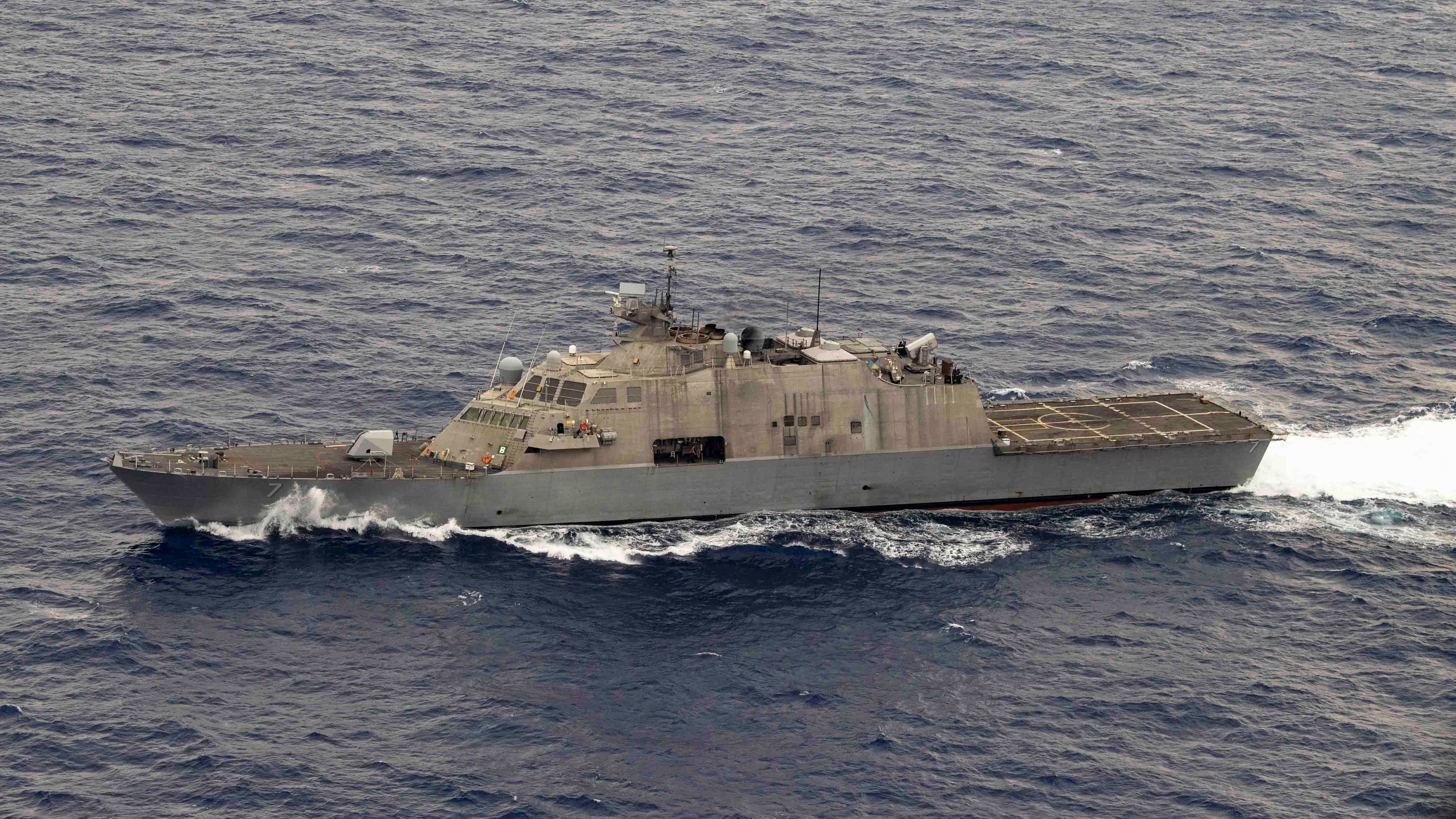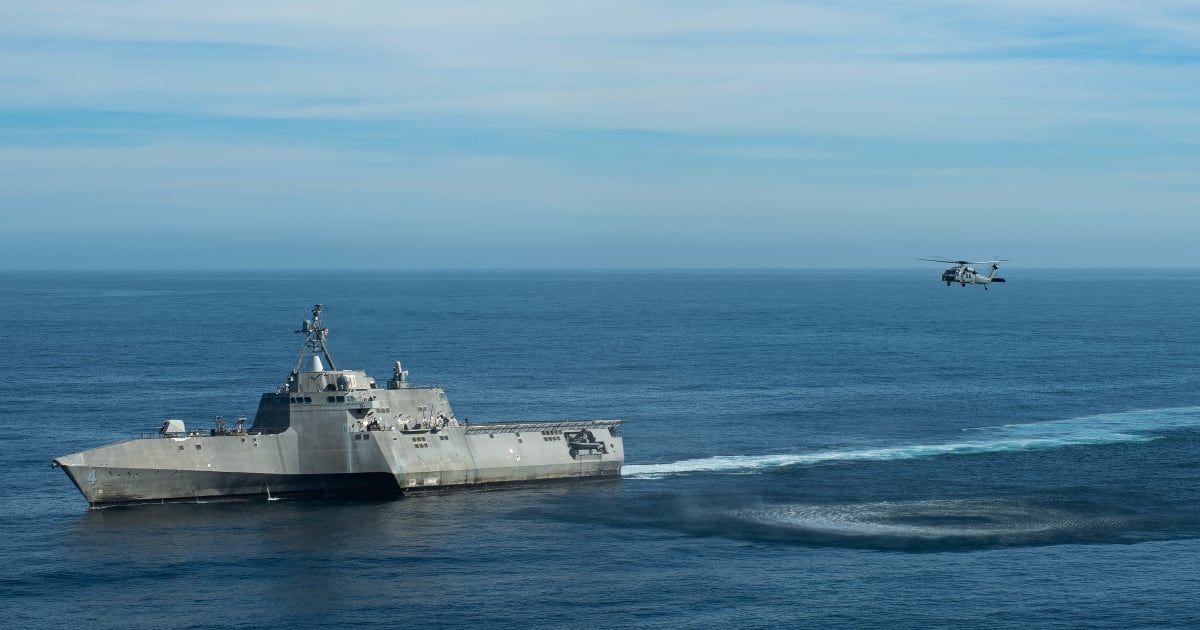When they first started filling the surface fleet’s ranks 13 years ago, the Navy’s littoral combat ships were billed as agile, efficient vessels capable of taking on a variety of missions.
Part of that efficiency involved small crews, which in turn required heavy reliance on contractors for even routine maintenance.
But such choices have led the embattled class to encounter maintenance challenges not seen elsewhere in the fleet, issues that could imperil the ability of such ships to get out of maintenance on time and therefore lessen the number of ships available for operations, according to a recent Government Accountability Office report.
GAO investigators found that the Navy doesn’t even know how to repair many commercial systems onboard LCS and is starting to pay the manufacturers of such systems for the required data to troubleshoot and fix issues on the ships.
In one instance, a broken part aboard one LCS was replaced by a cannibalized working part from another LCS because the part’s manufacturer “did not have a procedure to fix it,” according to GAO.
“As a result, the Navy had to take the part from another ship to fix the first ship and put the broken part in storage,” the report states.
RELATED
Read the Government Accountability Office's report on littoral combat ship maintenance issues
But even as the Navy works to get better at fixing its own littoral combat ships, contractors will still have to be flown overseas to perform routine maintenance, resulting in travel costs billed to the government that range from a few thousand dollars to more than $1 million, the report states.
Because the original manufacturers are the only ones who know how to fix certain ship systems, a lack of available repairmen can also imperil LCS maintenance schedules, GAO found.
“These challenges put pressure on the planned maintenance schedule for LCS and the effects are likely to be exacerbated as a greater number of ships begin operations and enter the maintenance cycle,” GAO wrote.
The LCS maintenance woes reported by GAO come as the Navy deals with a class-wide combining gear transmission issue in the Freedom variant.
The long-promised LCS mission modules have also failed to materialize on the ships, meaning the class still has not taken on the diverse array of missions for which they were intended.
Chief of Naval Operations Adm. Michael Gilday told Navy Times’ sister publication, Defense News, last month that the sea service is working to push more LCS maintenance back to the deckplates and away from contractors as part of an effort to rein in the costs of operating the ships.
RELATED

“So, if you snap the chalk line today, the costs are pretty high, especially compared to a [guided-missile destroyer] DDG,” Gilday said. “But what we’re trying to do is move from a contractor-centric maintenance model to a sailor-centric maintenance model, or a Navy-centric maintenance model.”
GAO’s late April report notes that LCS includes numerous commercial-based systems that are not used on other Navy ships, and that manufacturers have not provided the service with the technical data to maintain such systems, meaning the Navy is flying blind when it comes to certain components on its own ships.
That lack of data can lead to longer maintenance periods due to the extra coordination required for manufacturers to assist with or complete such work, according to GAO.
“Although the Navy is establishing teams of its personnel to take on routine maintenance, contractors will continue performing some of this work,” the GAO report states.
GAO analyzed 18 LCS maintenance delivery orders spanning from fiscal 2018 to April 2020 and found the Navy “had to contract for more repair work than originally planned, increasing the risk to completing LCS maintenance on schedule.”
“A majority of this unplanned work occurred because the Navy did not fully understand the ship’s condition before starting maintenance,” GAO wrote, adding that the Navy is beginning to systemically collect maintenance data to more accurately plan for such work.
The GAO’s report found “significant unplanned work” among the delivery orders it examined, “indicating a greater likelihood of cost and schedule risk in completing LCS maintenance.”
RELATED

LCS is grappling with numerous instances of unplanned maintenance — known as “growth work” -- even when it comes to routine jobs, increasing the risk of higher costs and schedule delays, GAO wrote.
“A senior Navy maintenance official stated that the amount of growth work for LCS is ‘unbelievable,’” the report states.
In its analysis of 18 LCS delivery orders — 16 of which were for minor or routine maintenance — GAO found that there were 651 contract change requests for growth work, and that 52 percent of those requests involved work that emerged only after the ship was in the availability.
The relative newness of the ships and their limited operations means the Navy had not had enough opportunities to collect data on growth work, according to GAO.
LCS’s acquisition and sustainment strategy consists of “a heavy reliance on contractors, rather than sailors, for all types of maintenance,” GAO wrote, a setup that requires contractors for routine maintenance and a heavy reliance on commercial systems manufacturers.
Such maintenance contractors, referred to in the report as “fly-away teams,” travel overseas to conduct even routine and minor LCS maintenance, giving the already-costly enterprise an even higher price tag.
RELATED

Because it relied heavily on commercial systems onboard LCS and allowed contractors to determine which systems were used in their designs, the Navy doesn’t consistently have access to technical information necessary to maintain such systems, according to GAO.
GAO reported in March 2020 that, because the LCS program planned to use contracted maintenance, the Navy never purchased the technical documentation necessary to maintain ship systems.
“This limited access to information is in contrast with other ship classes that have systems that provide the Navy greater access to technical data to inform maintenance tasks,” the report states.
Original manufacturers have also placed markings on data that obscure “key information,” and the Navy “has had to work with its legal team to remove these markings and to obtain needed rights to the information.”
“This requires more time and extends the maintenance process,” the GAO wrote.
The Navy has recently started working with the manufacturers to purchase maintenance data about the ships and created a “strike team” last summer to address LCS system failures, but GAO notes that the Navy has only recently begun funding efforts that involve plans to replace LCS commercial systems with Navy-owned systems.
Geoff is the managing editor of Military Times, but he still loves writing stories. He covered Iraq and Afghanistan extensively and was a reporter at the Chicago Tribune. He welcomes any and all kinds of tips at geoffz@militarytimes.com.





